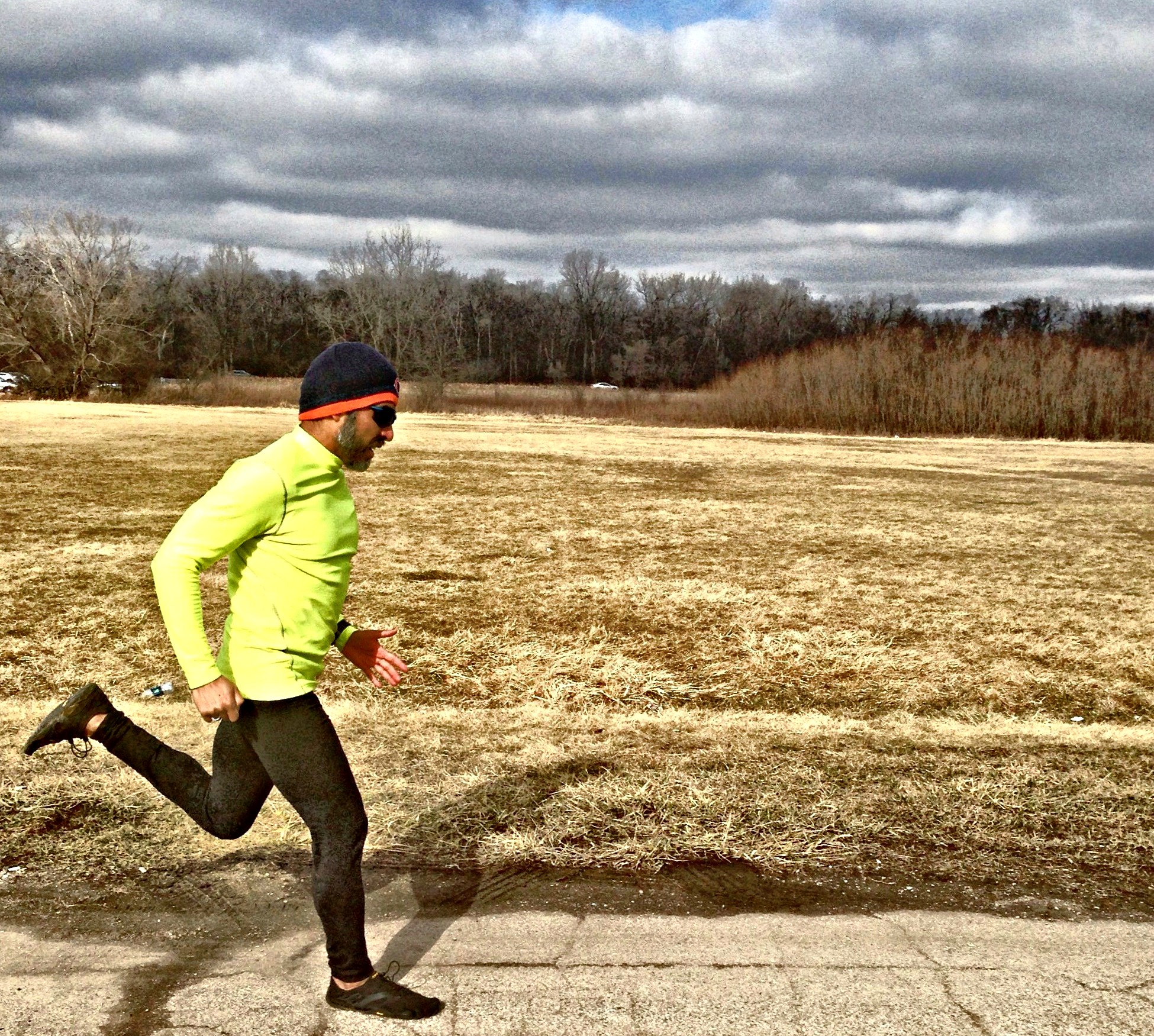Heel strike runners automatically choose not to heel strike, and land farther away from the heel, when they are tired and this may be a natural, reflexive strategy to reduce impact, so that the tired muscles don’t have to attenuate the intense impact of heel strike running.

Heel Strike Runners Prefer Not to Heel Strike When Tired
Under fatigued conditions, heel strike runners were found to adopt a less pronounced heel strike, or a non-heel strike landing strategy in response to the perception of harmful loads.
This finding forms the basis that the harmful impact forces related to heel strike running drives the human body to adopt a forefoot strike landing for better protection.
Although most joggers heel strike, because of the shoes, humans were actually shaped by evolution to run with a forefoot strike. In contrast, due to its high impact nature, heel strike running places a runner at a higher risk of musculoskeletal injury such as stress fractures, muscle strain and tendinitis which is why when heel strikers fatigue, they develop a less pronounced heel strike to reduce body loads.

A non-heel strike landing when running is central to reduce the strain that produces microtrauma and to thereby, effectively manage impact loads. For example, a study by Willson and Kernozek found that under fatigued conditions, less force and a smaller peak pulse was delivered to the heel in heel strike runners whereas in non-fatigued conditions, peak forces was higher under the heel.
In addition, the fatigued heel strike runners also shortened step length in order to reduce the braking effect at heel strike -this strategy allows the center of mass to pass over a smaller horizontal displacement relative to the stance leg.
Not only that, coaches of elite runners, who are mostly forefoot strikers by the way, recommend keeping foot strike position as close to the center of mass as possible. Doing so also coincides with reduced heel pressures.
Thus, when fatigued, heel strike runners tend to adopt specific mechanical traits that reflect a forefoot strike “natural” running style (i.e. less heel pressures, smaller stride length) to make running tolerable.
During heel strike running, there’s only so much a heel striker can take of the heel strike-transient as well as the high magnitude of the ground reaction force before an effort is made to modify mechanics. This is why adopting a non-heel strike landing is advantageous under fatigued conditions; it’s easier on the body.
Getting back to the evolution of human running, a forefoot strike landing was a crucial adaptation that arose in response to minimizing impact under barefoot conditions. This fact complements the finding in the study in that human’s truly prefer not to heel strike when running.
More From Run Forefoot:
- Tighter Muscles Are Better
- Where is Your Forefoot?
- Minimalist Shoe for the Summer
- Barefoot Running Shoes Brands
References:
Elliot, B, and T. Ackland. Biomechanical Effects of Fatigue on 10,000 meter running technique. Res. Q. Exerc. Sport 52:160–166, 1981.
Nigg, B. M., H. A. Bahlsen, S. M. Luethi, and S. Stokes. The influence of running velocity and midsole hardness on external impact forces in heel-toe running. J. Biomech. 20:310–315, 1987.
Willson, JD and Kernozek, TW. Plantar loading and cadence alterations with fatigue. Med Sci Sports Exerc, 1999; 31(12):1828.
Bretta Riches
BSc Neurobiology; MSc Biomechanics candidate, ultra minimalist runner & founder of RunForefoot. I was a heel striker, always injured. I was inspired by the great Tirunesh Dibaba to try forefoot running. Now, I'm injury free. This is why I launched Run Forefoot, to advocate the health & performance benefits of forefoot running and to raise awareness on the dangers of heel striking, because the world needs to know.
Latest posts by Bretta Riches (see all)
- Are Minimalist Shoes Good for Seniors? YES! - 14/04/2024
- BIG Deals On Running Gear And More! - 09/04/2024
- Why Are My Feet Tired After Running? - 04/04/2024

Leave a Reply